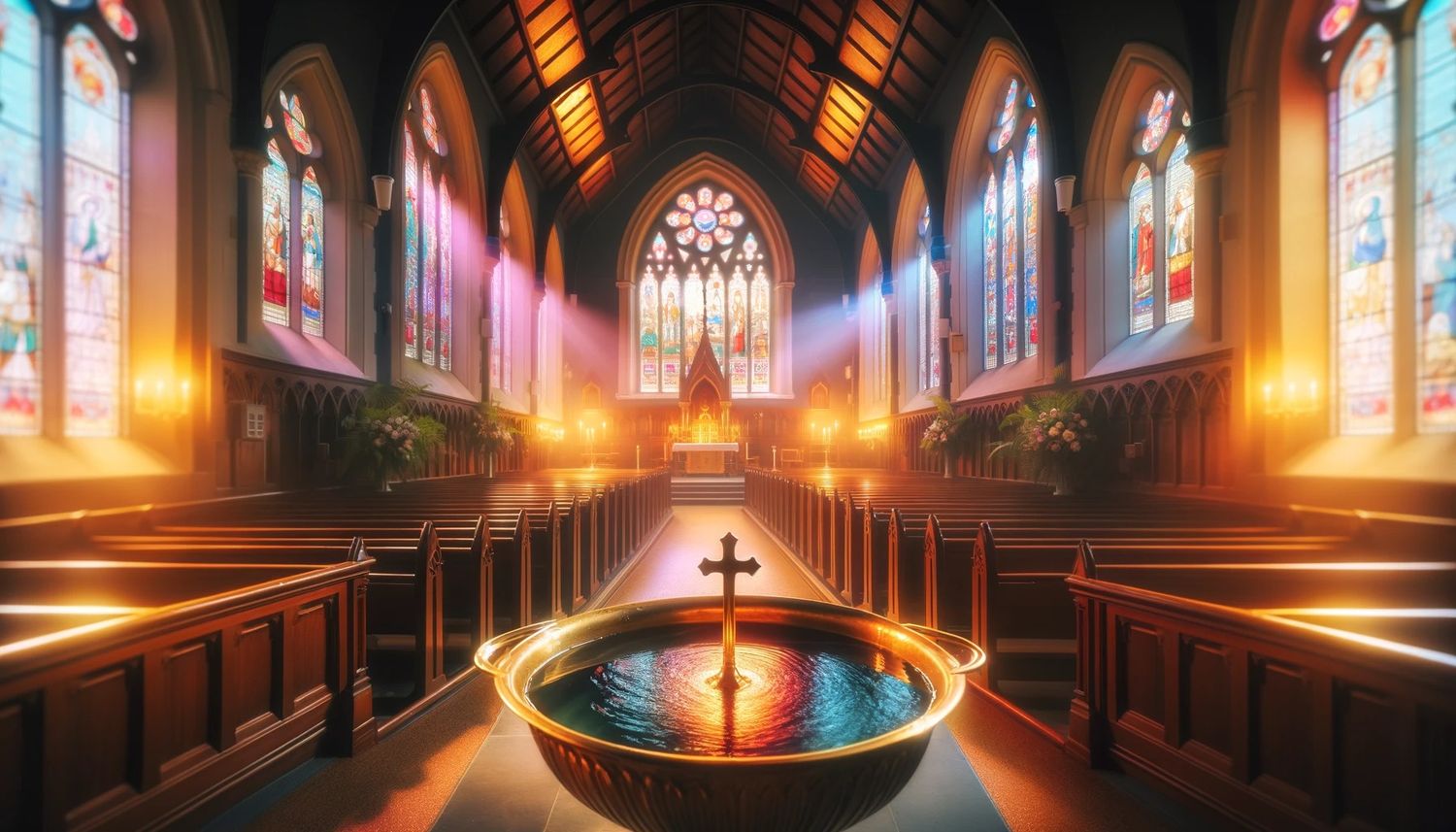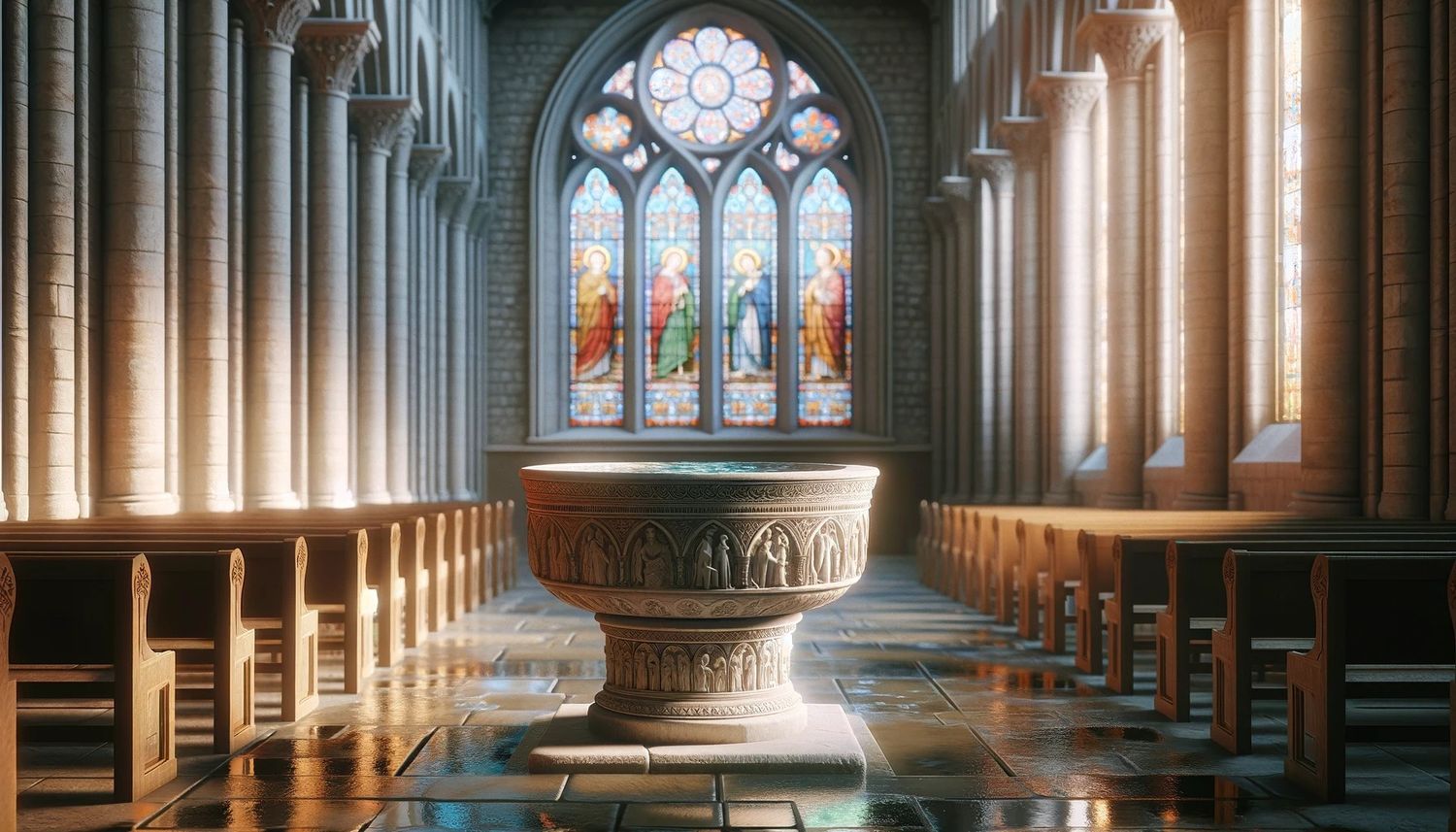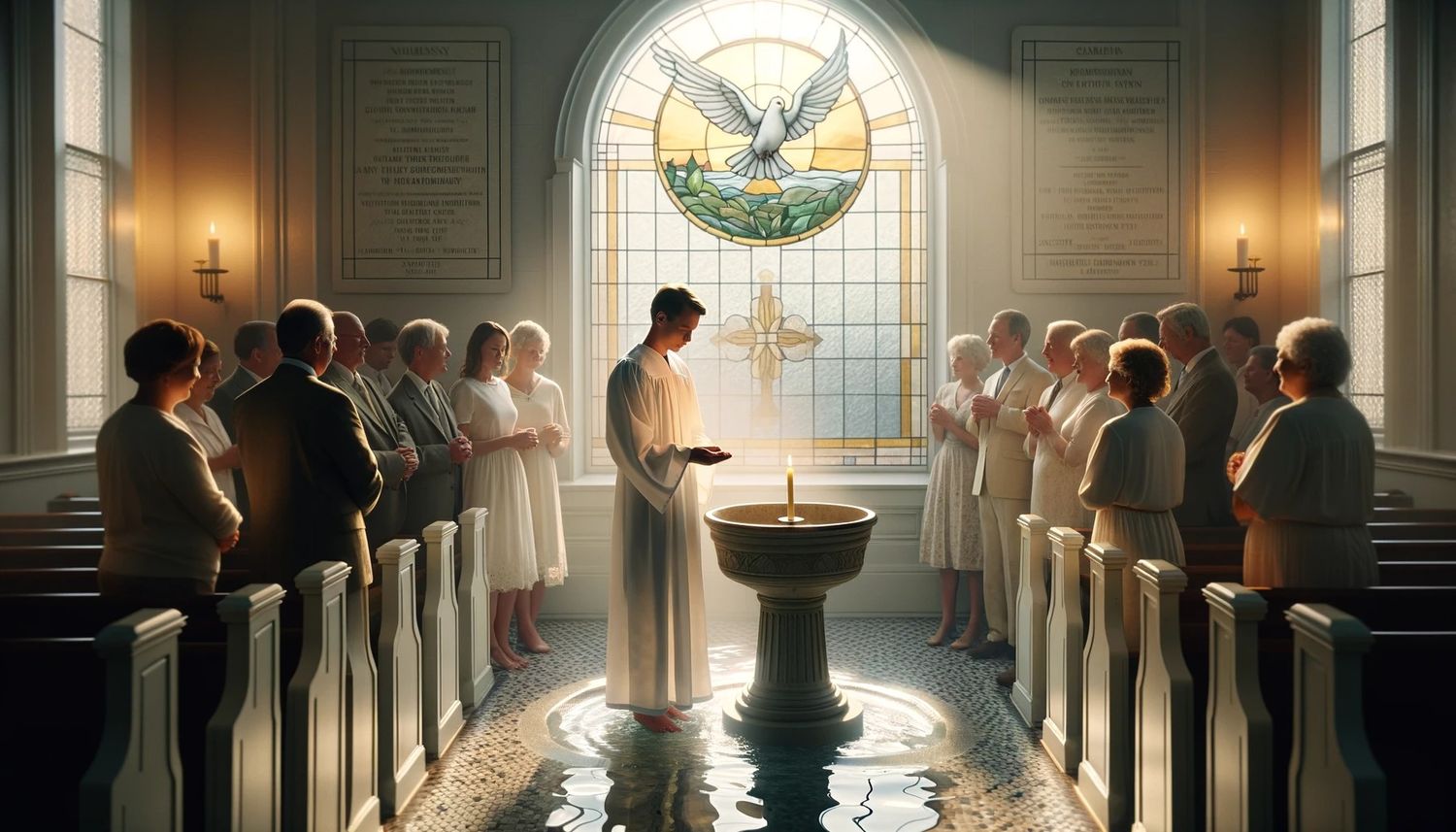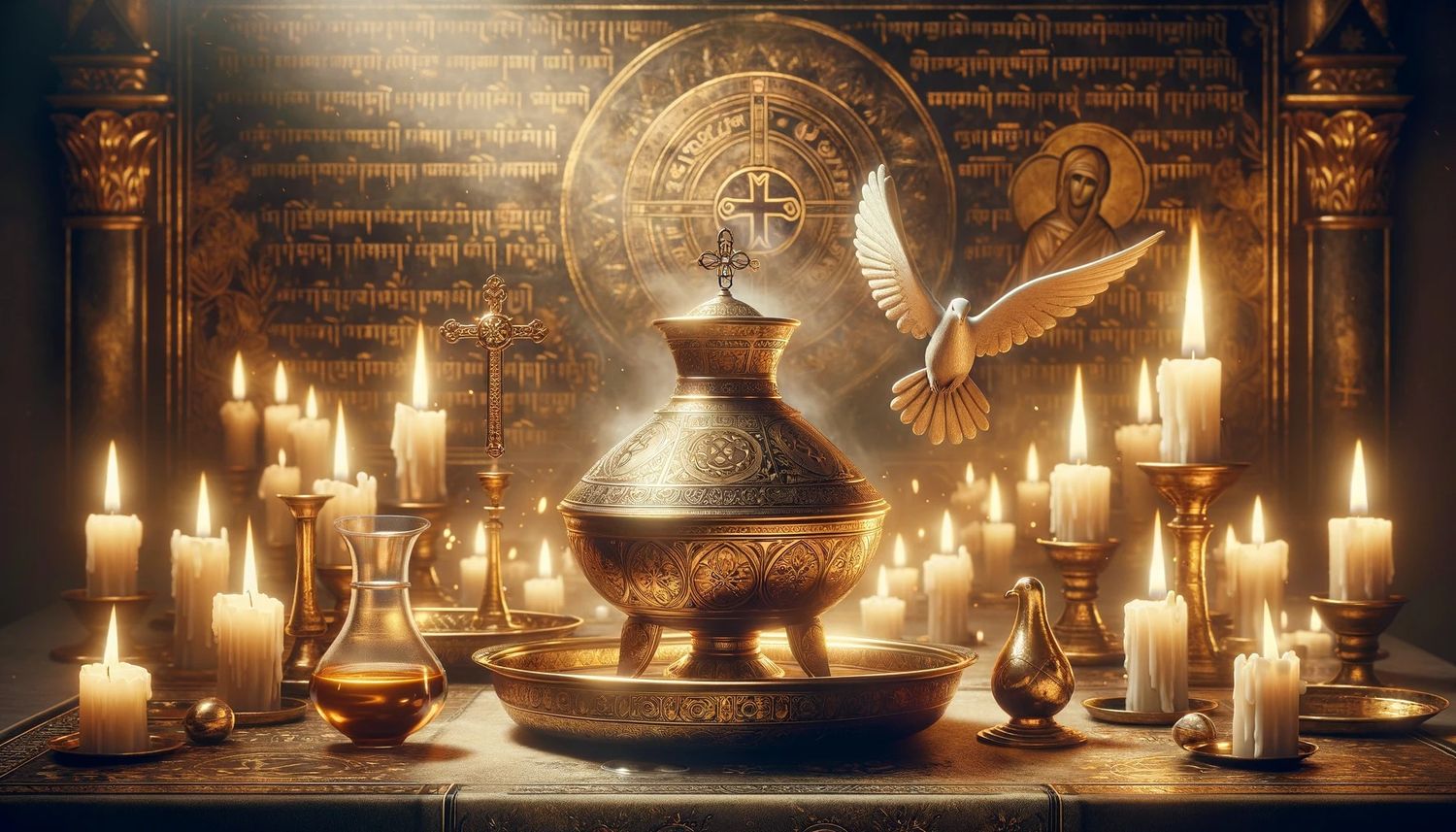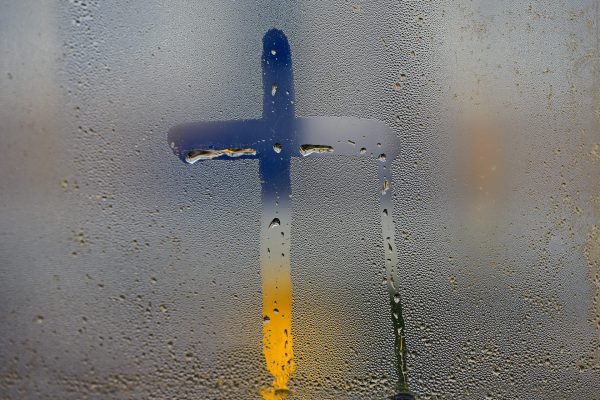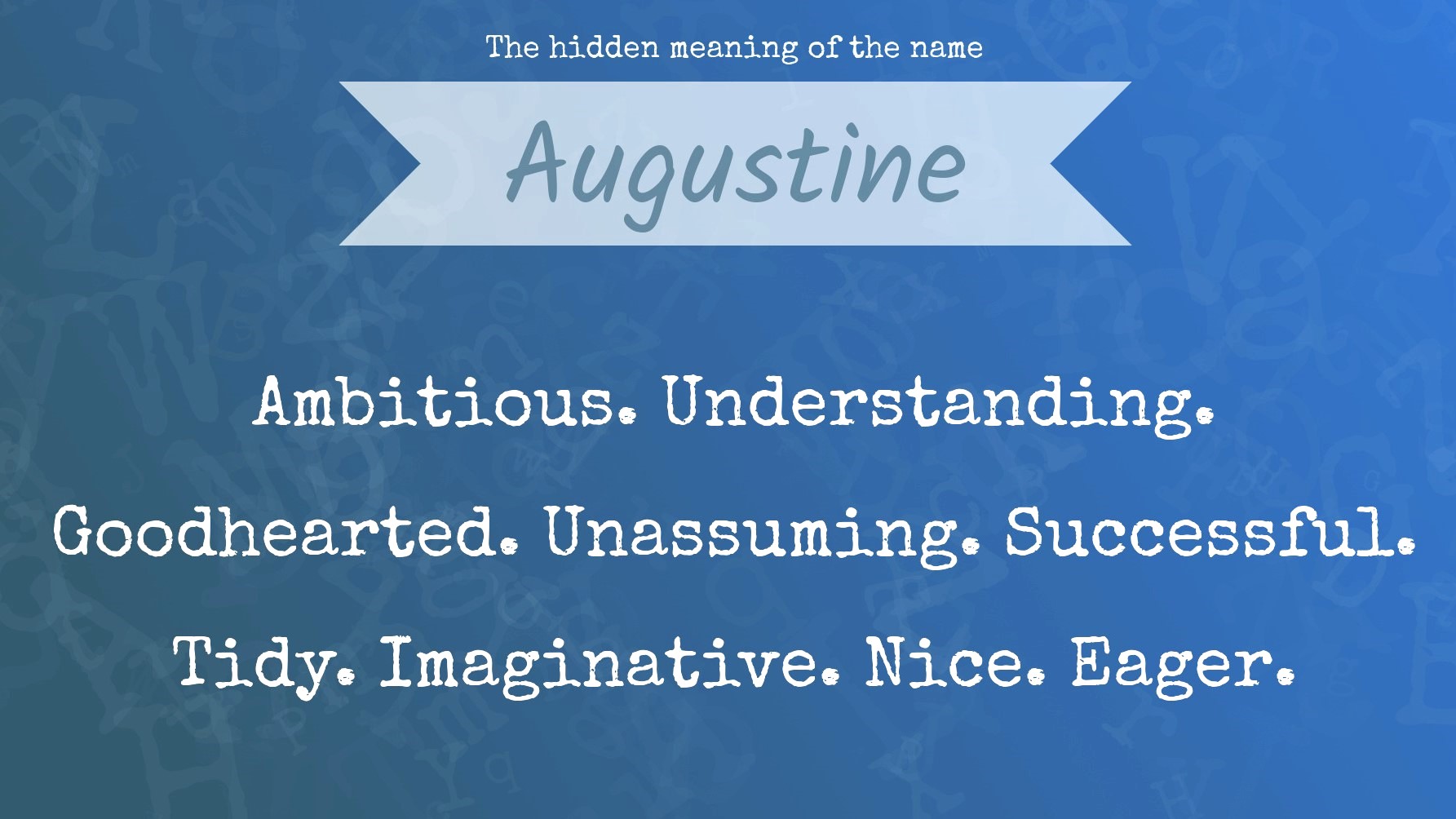Home>Theology and Spirituality>What Does The Dove Mean In Baptism
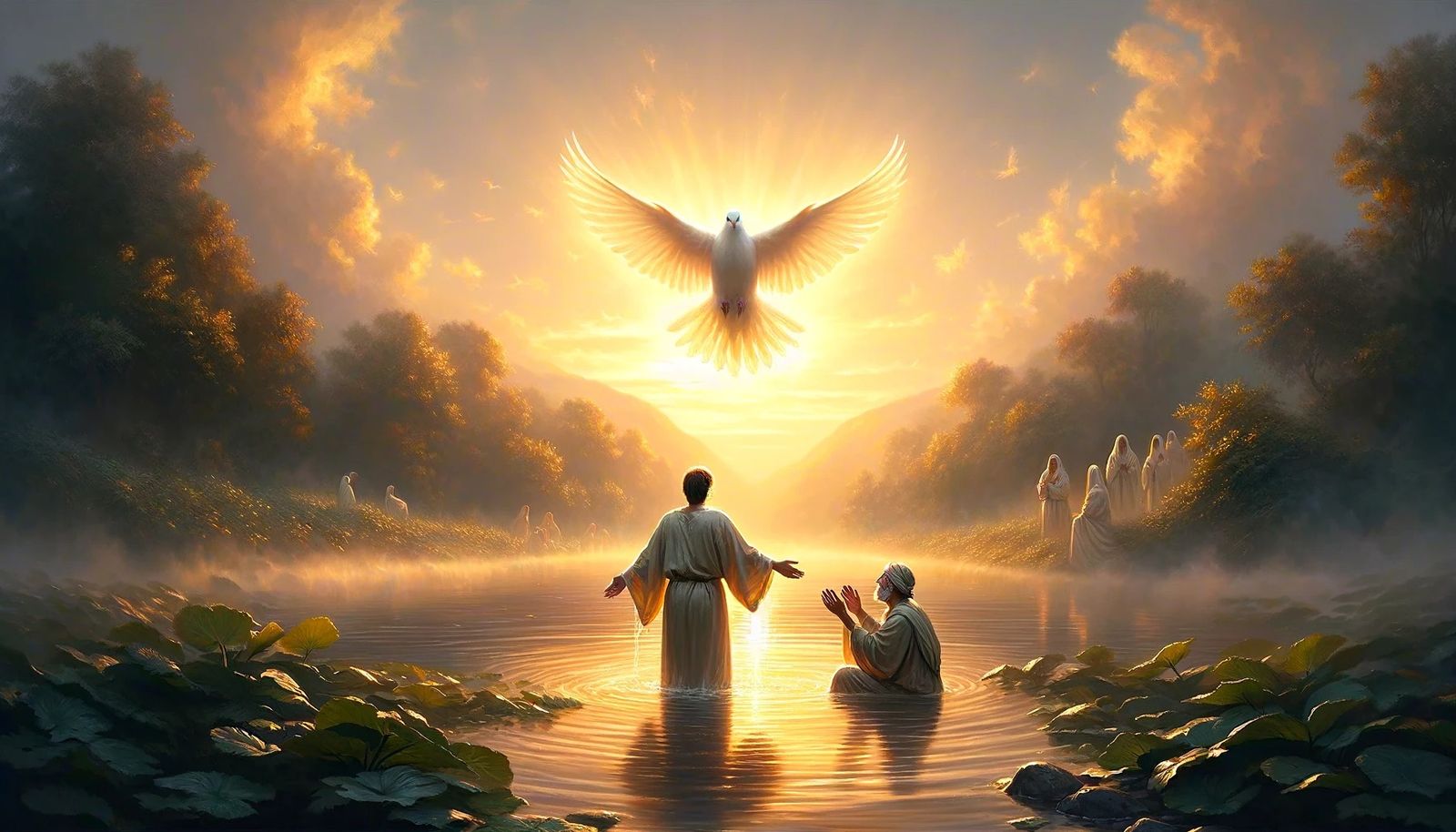

Theology and Spirituality
What Does The Dove Mean In Baptism
Published: March 2, 2024
Jason DeRose, Managing Editor at Christian.net, uses his expertise in religion and journalism to deepen understanding of faith's societal impacts. His editorial leadership, coupled with a strong academic background, enriches the platform’s diverse content, earning him recognition in both journalism and religious circles.
Discover the significance of the dove in baptism and its symbolism in theology and spirituality. Explore the deeper meaning and importance of the dove in the Christian faith.
(Many of the links in this article redirect to a specific reviewed product. Your purchase of these products through affiliate links helps to generate commission for Christian.net, at no extra cost. Learn more)
Table of Contents
The Symbolism of the Dove in Christian Baptism
The dove holds significant symbolism in Christian baptism, representing various aspects of the faith and the baptismal ceremony itself. Here are some key symbolic meanings associated with the dove in Christian baptism:
-
Purity and Innocence: The dove is often seen as a symbol of purity and innocence in Christian tradition. In the context of baptism, it represents the cleansing of sin and the beginning of a new, spiritually pure life for the baptized individual.
-
Peace and Hope: The image of a dove carrying an olive branch has long been associated with peace and hope. In the context of baptism, the presence of the dove symbolizes the peace and hope that come with the forgiveness of sins and the embrace of the Christian faith.
-
Divine Presence: The dove is also closely linked to the presence of the Holy Spirit in Christian theology. In the New Testament, the Holy Spirit is described as descending like a dove during the baptism of Jesus, establishing a direct connection between the dove and the divine presence in the act of baptism.
-
New Beginnings: As a creature that soars into the sky, the dove symbolizes new beginnings and the journey of the soul towards spiritual heights. In the context of baptism, it signifies the start of a new life in Christ and the believer's journey towards spiritual growth and fulfillment.
-
Unity and Love: In some Christian traditions, the dove is seen as a symbol of unity and love. This symbolism is particularly relevant in the context of baptism, as it represents the unity of the baptized individual with the body of Christ and the love that God has for His people.
In summary, the symbolism of the dove in Christian baptism encompasses purity, peace, divine presence, new beginnings, unity, and love, all of which are central themes in the Christian faith and the sacrament of baptism.
Read more: What Does One Baptism Mean
The Biblical Significance of the Dove in Baptism
The biblical significance of the dove in baptism is deeply rooted in the accounts of Jesus' own baptism as recorded in the Gospels. In the Gospel of Matthew, the baptism of Jesus is described, with the Holy Spirit descending like a dove and alighting on him. This event is a pivotal moment in Christian theology, as it signifies the anointing of Jesus for his ministry and the revelation of the triune nature of God, with the presence of the Father, the Son, and the Holy Spirit. The image of the dove in this context serves as a powerful symbol of the divine presence and affirmation, affirming the significance of baptism as a sacred act of initiation into the Christian faith.
Furthermore, the Gospel of John also references the role of the dove in relation to baptism. John the Baptist, a central figure in the New Testament, speaks about the coming of the Messiah and describes how he saw the Spirit descending from heaven like a dove and remaining on Jesus. This testimony underscores the biblical connection between the dove and the divine affirmation of Jesus' identity and mission. It also establishes a profound link between the symbolism of the dove and the transformative nature of baptism, wherein believers are initiated into a new life in Christ and receive the indwelling of the Holy Spirit.
The biblical significance of the dove in baptism extends beyond the specific accounts of Jesus' baptism. In the Old Testament, the dove is associated with themes of purity, sacrifice, and the presence of God. The story of Noah's ark, for example, features a dove sent out to search for dry land, symbolizing the hope of new life and the restoration of creation after the flood. This imagery resonates with the symbolism of baptism as a rite of passage that signifies spiritual renewal, purification, and the beginning of a new covenant relationship with God.
In essence, the biblical significance of the dove in baptism is multifaceted, encompassing themes of divine affirmation, spiritual anointing, new life, and the indwelling of the Holy Spirit. These biblical foundations contribute to the rich symbolism and theological depth associated with the dove in the context of Christian baptism, shaping the understanding of this sacred sacrament within the Christian tradition.
The Historical Use of the Dove in Baptismal Art and Imagery
The historical use of the dove in baptismal art and imagery reflects the enduring significance of this symbol within Christian tradition. Throughout the history of Christian art, the dove has been a prominent motif in depictions of baptism, serving as a visual representation of the spiritual realities associated with this sacred sacrament. From early Christian catacomb paintings to medieval illuminated manuscripts and Renaissance masterpieces, the dove has been a recurring symbol in the visual language of baptismal imagery.
-
Early Christian Art: In the catacombs of Rome and other early Christian sites, the image of the dove is frequently found in association with baptismal scenes. These depictions often portray the baptism of Christ or the baptism of believers, with the dove hovering above the waters or descending upon the baptized figure. Such representations emphasize the divine presence and the sanctifying work of the Holy Spirit in the act of baptism.
-
Medieval and Renaissance Art: During the medieval and Renaissance periods, the symbolism of the dove in baptismal art continued to flourish. Illuminated manuscripts, frescoes, and altarpieces featured intricate depictions of baptism, often incorporating the image of the dove as a central element. Artists such as Giotto, Leonardo da Vinci, and Raphael portrayed the baptism of Christ with the dove as a focal point, underscoring the theological significance of the Holy Spirit's role in the baptismal event.
-
Liturgical Objects and Architecture: In addition to visual representations, the dove found its way into the design of baptismal fonts, church architecture, and liturgical objects. Baptismal fonts often featured carved or sculpted doves, serving as a tangible symbol of the spiritual rebirth and cleansing associated with the sacrament of baptism. Furthermore, the dove motif could be found in the ornamentation of baptismal garments, liturgical vessels, and church decorations, reinforcing the connection between the dove and the sacred act of initiation into the Christian faith.
-
Iconography and Symbolism: The historical use of the dove in baptismal art and imagery also gave rise to specific iconographic conventions and symbolic interpretations. The dove, with its outstretched wings and gentle demeanor, came to embody the themes of peace, purity, and divine grace associated with baptism. Its presence in artistic representations served as a visual reminder of the spiritual realities that unfold in the sacrament, inviting contemplation and devotion from the faithful.
In summary, the historical use of the dove in baptismal art and imagery reflects the enduring visual language of Christian symbolism and theology. Across different historical periods and artistic traditions, the dove has remained a potent symbol of the divine presence, the work of the Holy Spirit, and the transformative power of baptism within the Christian faith. Its portrayal in art and imagery has contributed to the rich tapestry of visual representations associated with this sacred sacrament, shaping the collective imagination and spiritual understanding of baptism within the Christian tradition.
The Dove as a Representation of the Holy Spirit in Baptism
The dove serves as a powerful representation of the Holy Spirit in the context of baptism, embodying the presence, activity, and transformative work of the Spirit within this sacred sacrament. The association between the dove and the Holy Spirit finds its roots in the biblical accounts of Jesus' baptism, where the Spirit descended in the form of a dove and rested upon him. This pivotal event, recorded in the Gospels, established a profound connection between the dove and the divine presence of the Holy Spirit in the initiation of Jesus' public ministry. As a result, the imagery of the dove became intrinsically linked to the outpouring of the Holy Spirit and the spiritual significance of baptism within Christian theology.
In the Acts of the Apostles, the Holy Spirit is symbolically represented as tongues of fire descending upon the disciples at Pentecost, signifying the empowering and indwelling of the Spirit. While this imagery differs from the dove, it underscores the diverse ways in which the Holy Spirit is depicted in the biblical narrative. The use of the dove as a representation of the Holy Spirit in baptism aligns with the broader scriptural themes of divine manifestation, renewal, and empowerment, emphasizing the multifaceted nature of the Spirit's presence and activity in the life of believers.
Furthermore, the symbolism of the dove as a representation of the Holy Spirit in baptism extends beyond its biblical origins and finds resonance in the theological understanding of the Spirit's role in the life of the Church. In Christian theology, the Holy Spirit is recognized as the agent of spiritual rebirth, sanctification, and empowerment, all of which are intimately connected to the experience of baptism. The dove, with its gentle and peaceful demeanor, encapsulates the qualities attributed to the Holy Spirit, including comfort, guidance, and the bestowal of spiritual gifts upon the baptized.
The use of the dove as a representation of the Holy Spirit in baptism also reflects the universal and timeless nature of this symbolism within the Christian tradition. Across different cultural and historical contexts, the image of the dove has persisted as a visual shorthand for the presence and activity of the Holy Spirit in the sacrament of baptism. Whether in the intricate mosaics of Byzantine churches, the vibrant stained glass windows of Gothic cathedrals, or the contemporary artworks of modern churches, the dove continues to serve as a potent symbol of the Spirit's transformative work in the lives of believers through baptism.
In summary, the dove stands as a profound representation of the Holy Spirit in the context of baptism, embodying the divine presence, activity, and transformative power of the Spirit within this sacred sacrament. Its biblical origins, theological significance, and enduring symbolism contribute to the rich tapestry of spiritual understanding and visual representations associated with the role of the Holy Spirit in the initiation and nurturing of the Christian faith through baptism.
The Cultural and Global Interpretations of the Dove in Baptism
The symbolism of the dove in baptism extends beyond its significance within Western Christian traditions, encompassing diverse cultural and global interpretations that enrich the understanding of this sacred symbol. Across different regions, denominations, and religious practices, the dove holds a universal appeal as a symbol of peace, purity, and divine presence, resonating with people of various cultural backgrounds and faith traditions.
In Eastern Orthodox Christianity, the dove is a prominent symbol in the sacrament of baptism, reflecting the theological emphasis on the role of the Holy Spirit in the initiation and sanctification of believers. Iconography and liturgical practices in the Eastern Orthodox tradition often feature the image of the dove alongside baptismal scenes, underscoring the universal recognition of the dove as a representation of the Holy Spirit's transformative work in the lives of the baptized.
In African and African-American Christian communities, the symbolism of the dove in baptism intersects with cultural and spiritual traditions, infusing the sacramental rite with rich layers of meaning and significance. The dove may be interpreted within the context of ancestral spirituality, symbolizing the presence and blessing of the divine in the act of baptism, and serving as a bridge between the earthly and spiritual realms.
Within the context of indigenous and Native American Christian expressions, the symbolism of the dove in baptism may be interwoven with traditional symbols and narratives, reflecting a harmonious integration of Christian faith with indigenous cultural heritage. The dove's representation of peace, harmony, and spiritual renewal resonates with the interconnected worldview of many indigenous cultures, fostering a holistic understanding of baptism within these communities.
In global Christian traditions, the symbolism of the dove in baptism transcends geographical and cultural boundaries, uniting believers in a shared recognition of its spiritual significance. Whether in the vibrant celebrations of Latin American Catholicism, the solemn rites of Eastern Christian churches, or the diverse expressions of Protestantism worldwide, the dove remains a unifying symbol of the divine presence and transformative power at work in the sacrament of baptism.
Beyond the Christian context, the symbolism of the dove in baptism also finds resonance in other religious and cultural traditions. In Islam, the dove is revered as a symbol of peace and purity, and its presence in the narrative of Prophet Muhammad's life reflects its universal significance as a harbinger of hope and divine favor. Similarly, in Judaism, the dove is associated with themes of peace and renewal, echoing the universal symbolism of the dove as a bearer of spiritual blessings and new beginnings.
In summary, the cultural and global interpretations of the dove in baptism encompass a rich tapestry of meanings and associations that transcend specific religious boundaries. From Eastern Orthodox iconography to indigenous Christian expressions and interfaith contexts, the dove stands as a universal symbol of peace, purity, and divine presence, uniting diverse cultural and global perspectives in the shared recognition of its profound significance within the sacrament of baptism.
